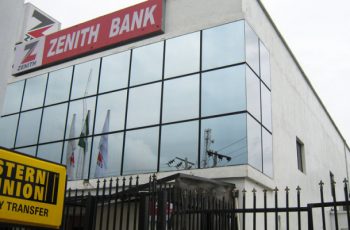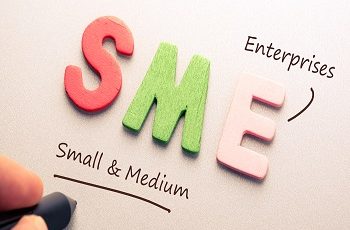Make Money from Your Workspace: How to Make Your Workspace Productive In 2020
Productivity is the soul of every business. If you want your employees to improve their productivity, then, you need to understand how to make your workspace productive and what makes a good workspace.
Not just the location, but the structure and the settings of the workspace, it could come down to your office layout designs, and most importantly, the relationship between employee space, and the overall vibe of your office.
Fortunately, there are many resources out there, which can help you boost your business’s productivity levels and make your workspace productive and conducive for your employees.
For one to accomplish these things there are some certain procedures and steps to follow, and also some factors that need to be in place. These steps would be explained in details in the next paragraphs.
Related: How to build a business system that will improve your productivity

Tips on How To Make Your Workspace Productive
-
Don’t pay too much attention to the physical environment
While physical space is certainly important, it’s also vital to create an atmosphere of productivity in your workplace. This means generating the exciting and attainable mission of your company and communicating to employees that they are integral to achieving those goals.
According to Raven Beria, the founder of the brand consultancy firm, Brandalaxy, “Making your office space more efficient starts with company culture, in my opinion. It doesn’t matter what kind of technology or office layout you have if you haven’t defined the values or clarified the vision of your business.”
Beria says the company culture is a key aspect of your business.
“By focusing on clearly defining your company culture, you set the expectations of behaviors. To sum it up, efficiency starts with the mindset, communication, and alignment of culture,” Beria said.
Simon Hansen, founder, and blogger at Best Sports Lounge, also believes efficiency and productivity start with a strong company culture that rewards effort and encourages employee buy-in.
“An office is more than just its building. It’s important for companies to reward progress, assure flexible working and encourage the key people in their company: their employees,” Hansen said.
Sometimes it does come down to the design of an office, though. Kayla Pendleton, owner and founder of co-working space Her Space, recognizes that and incorporates it into the physical design of her locations.
“As the creator of a co-working community, it was extremely important to create shared spaces that used the best features of flexible workspaces to promote community but also helped my members be extremely productive,”
Pendleton said. “I’ve learned that if you have an open office space or shared spaces, then you must also have meeting spaces where people can have privacy for concentrated work or for phone calls.”
The design and layout of your office also depend on the type of business you’re running.
“If the workplace is uncomfortable or full of distractions, it can make for an unhappy workplace. And when something makes you unhappy, you are simply not as productive or engaged as you could be,” said Kenny Trinh, managing editor at Netbooknews. “For example, an open office layout is good for employee interaction but prone to noise and visual distractions that can make it difficult to focus on their work.”
Trinh said there’s no perfect or “best” office layout, but as long the needs of your employees are prioritized, you’re on your way.
-
There have to be opportunities for movement
“The best way that I stay focused during a long day of work is to acknowledge when I’ve hit a productivity wall and to take lots of short, quick breaks to gain a new perspective on what I’m working on,” said Jamie Fertsch, director and co-founder of XDesk, a U.S.-based company that creates customized, ergonomic desks out of environmentally friendly materials.
Fertsch’s company makes a stand-to-sit desk that encourages changing positions and moving throughout the workday, but you can build other opportunities for movement into your workspace. Things like putting the copy machine or phone on the opposite side of the room from the computer and having a central water cooler create reasons to stand and move.
“Productivity is not directly correlated with time spent on a task,” Fertsch added. “It’s important to make sure that you’re recalibrating and refueling once in a while.”
Part of making your workspace more efficient and productive could also mean giving your employees the opportunity to work from home or creating flexible schedules if your business allows for it.
“[Consider] a workspace that doesn’t confine employees to one spot and gives them the option to work remotely, sit outside, etc.,” said Sean Hayes, head of technology at Hausera.
-
Work on decorations
To make your workspace productive, you should know that an assortment of flowers isn’t just for pretty social media photos. They serve a great benefit in an office as well.
This is made more understandable by Fertsch who says she likes her space to feel a little more alive. She stated that houseplants are not a traditional method of creating a productive workspace, but that doesn’t mean their impact is imaginary.
“Scientific studies have proven the positives of more greenery for offices. From reducing stress to increasing productivity and creativity, plants have oodles of pros.”
Dmytro Okunyev, the founder of AI-powered team chat Chanty, said plants can create an environment conducive to increased productivity.
“Having lots of plants around the workspace helps produce cleaner air, and it motivates employees to be more energetic and creative,” Okunyev said.

-
Purchase improved gadgets and electronics
Smartphone’s, tablets and other gadgets can help you stay organized and efficient, but they can also be a big distraction and time-waster. For Fertsch, the best way to avoid this wasted time is to find a home for gadgets and leave them there.
“These days, we all have so many screens competing for our attention, so create a ‘home’ for your smartphone, smart-watch and other potentially distracting gadgets,” said Fertsch. “Keep them in a dedicated place while you do your work so you won’t be sidelined by a constant stream of notifications.”
A good place to stash your electronics is in a drawer, where it can be easily accessible.
-
Always keep your workspace clean
If you’re working and thinking about how to improve your company’s productivity in a dirty and unconducive environment, then you’re probably not getting a lot of work done.
“Take a few minutes every day to tidy up your workspace,” Fertsch said. “You can do this by throwing out unnecessary items and maintaining whatever organization system suits your style, so those extra distractions and clutter don’t bog.”
In addition to cleaning or organizing her workspace every day, Fertsch organizes her to-do list so she doesn’t waste time at the beginning of her workday. At the end of the day, she sits down and writes what she needs to get done tomorrow.
“This helps me reflect on what I accomplished for the day and how I can move forward to produce great work tomorrow,” Fertsch added.
Ron Lieback, founder and CEO of ContentMender, recommended treating your work desk as a new document ‒ and with that new document, you’re about to draft a blog entry or email.
“A blank document actually allows your mind to focus more. Now picture that document filled with random words and numbers all cluttered onto the paper, and you have to write in between this. Your mind will play tricks on you and focus will be impossible. The same goes for an unorganized office,” said Lieback.
-
Best desk layout design for productivity
Personalizing your space, in moderation, of course, can increase your emotional connection to your work, but it’s important not to let the personal space become the clutter that Lieback warns against.
“While items that you don’t frequently use shouldn’t take up valuable desk real estate, I still like to tailor my space to appeal to my visual side,” Fertsch said.
In addition to productivity-boosting flowers, she keeps a personal desktop calendar, which helps her stay on track throughout the workweek.
She also recommends choosing personal items that inspire you to be productive.
“I like to keep a framed photo of my kids on my desk. They’re the ones that really keep me motivated throughout the day,” said Fertsch.
No employee is the same; there is no one-size-fits-all approach to office layouts, design or functionality that suits everyone.
Your employees should be given the flexibility to be in the office during the entirety of the workday, letting them have some desk layout space and designs.
Been appreciative and giving them the opportunity to express themselves will also make employees want to be more productive, and it helps them be to be more focused and determined in achieving that goal.

